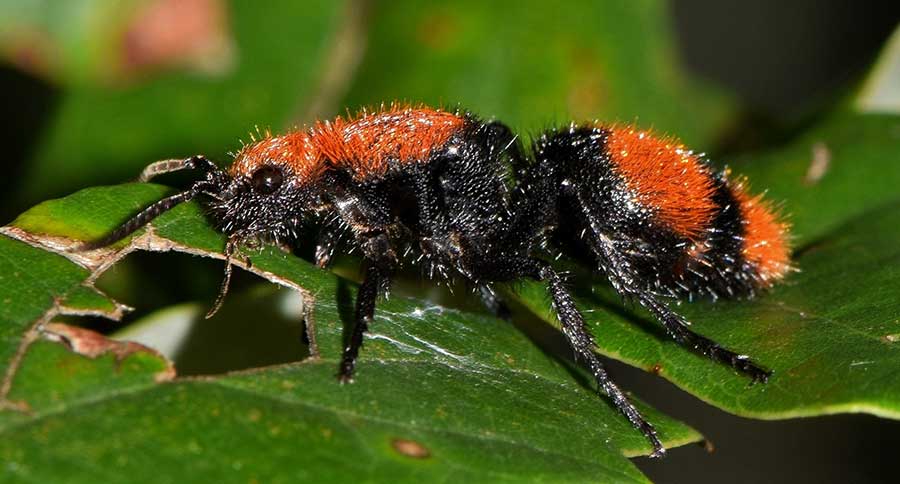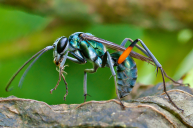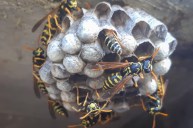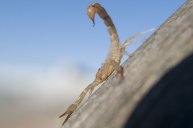The cow killer ant is here to stay. Here is what's worth knowing about them.
The nasty little creature known as the cow killer ant (or the red velvet ant), scientific name dasymutilla occidentalis, is actually a parasitoid species of wasp.
They are typically covered in an orange-red and black colored "velvety" exterior. In this case, fuzzy does not equal cuddly.
Not to be confused with other 'red' ants—specifically fire ants—the cow killer is, firstly a wasp, and secondly a solitary creature.
These external parasites generally search out the nest sites of other wasps, such as yellow jackets, paper wasps, and particularly the ground nests of the Eastern Cicada Killer and, according to the Great Smoky Mountains National Park, will "lay her eggs on top of the developing host larvae."
This allows the hatch of the cow killer ant to gradually feed on its host larva until it reaches the pupa stage and leaves on its own, and, incidentally, isn't the worst thing about this brutal little wasp. It also has a sting that is unlike anything you've ever been stung by, hence its devious name.
Are red velvet ants poisonous?
If we're talking about an insect sting, we're almost always talking about some sort of poison. If we're talking about a wasp that has the moniker "cow killer," then yeah, these things are poisonous.
With a sting so painful that it's said to be able to "kill a cow," this little creature deserves all of the respect that we can give it.
The male red velvet ants have wings for flight while the wingless females do not, but males are not endowed with stingers, making the ground dwelling female the one to be most careful of.
Interestingly enough, these wasps have an odd defensive mechanism above and beyond their sting: a stridulatory or squeaking sound.
Where do cow killer ants live?
The eastern red velvet ant can be found from Connecticut to Florida, and from Texas to Missouri in meadows, old fields, and edges of forests.
These small creatures are most common in the summer months, particularly in sandy areas and regions with lone females moving about on the ground seeking ground nesting bees and other wasps.
Maybe the most important thing to remember when living in an area where these little bugs dwell: think about using caution when walking in bare feet!
Looking for a little more? Follow my webpage, or on Facebook and Twitter.
NEXT: HERE'S WHY FLORIDA MIGHT JUST BE THE MOST DANGEROUS STATE IN THE COUNTRY
WATCH




